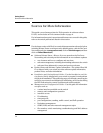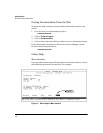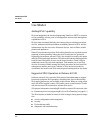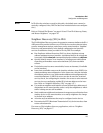
2-4
Introduction to IPv6
Migrating to IPv6
IPv6 Propagation
IPv6 is currently in the early stages of deployment worldwide, involving a
phased-in migration led by the application of basic IPv6 functionality. In these
applications, IPv6 traffic is switched among IPv6-capable devices on a given
LAN, and routed between LANs using IPv6-capable routers. Using the IPv6
features in this software release, the switch can operate in an IPv6 network,
be managed using an IPv6 management station, and interact with DHCPv6 and
IPv6-enabled DNS servers in the same network or accessible through a
connection to an IPv6 router.
Dual-Stack Operation
Since most initial IPv6 deployments are in networks having a mixture of IPv6
and IPv4 hosts software release K.13.01 supports dual- stack IPv4/IPv6 oper-
ation. This enables the switch to communicate individually with IPv4 and IPv6
devices with their respective protocols. Thus, IPv4 and IPv6 traffic is
supported simultaneously on the same VLAN interface. This means that both
IPv4 and IPv6 devices can operate at the same time on a given VLAN.
Note Software release K.13.01 does not include gateways for translation between
IPv6 and IPv4 traffic. While IPv4 and IPv6 traffic coexists on the same VLAN,
the individual IPv4 and IPv6 devices ignore each other's traffic.
To forward IPv6 traffic from the switch to an IPv6-capable device on a different
VLAN, a link to an external IPv6-capable router is needed. Also, IPv6 traffic
movement from the switch over IPv4 paths requires routers capable of IPv6
over IPv4 tunneling.


















